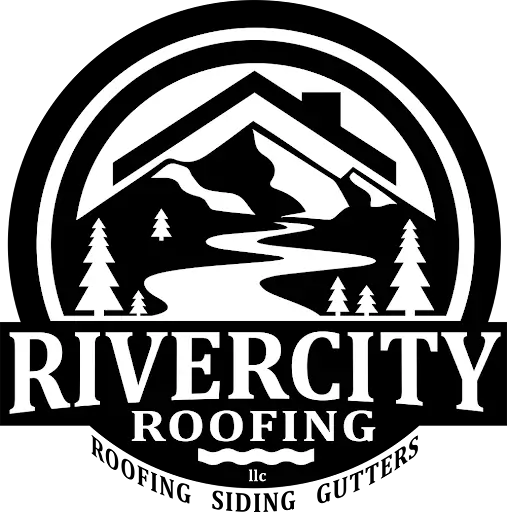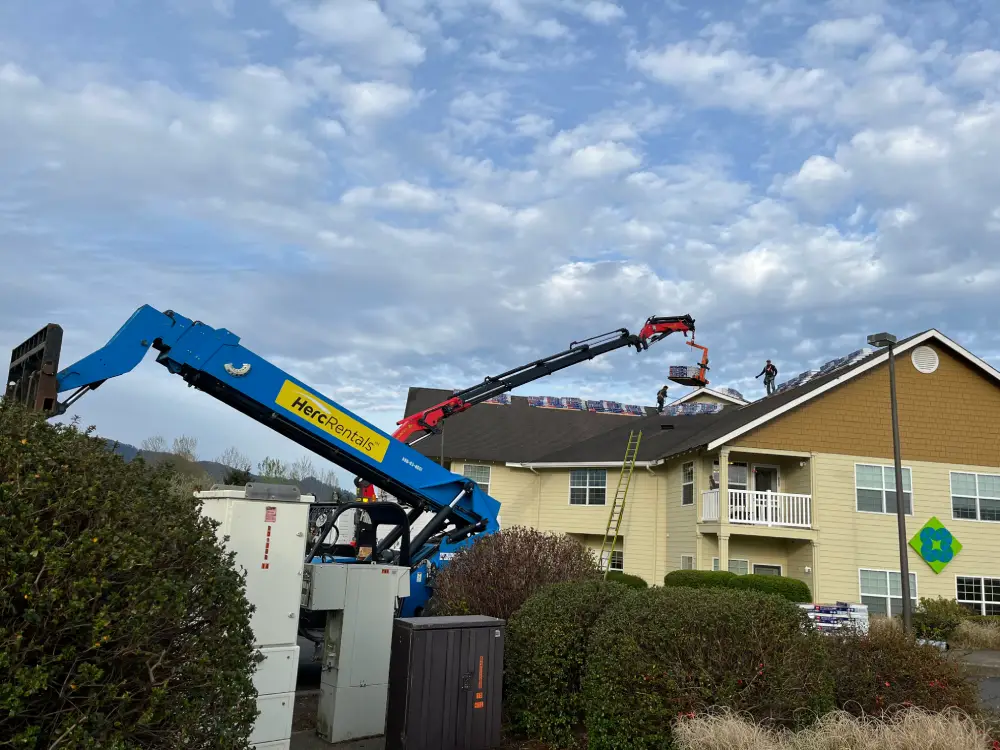Commercial roof leaks can cause significant damage and disrupt business operations. Addressing these issues promptly within a commercial building is crucial to preventing extensive damage and disruption of business activities. Commercial roof leak repair requires expertise and precision to identify the root cause and implement effective solutions.
This article explores common causes of roof leaks in commercial buildings and provides guidance on detecting and locating these issues. It delves into professional repair solutions and preventive maintenance strategies to help building owners and managers safeguard their investments. By understanding these aspects, businesses can take proactive steps to address roof leaks and prevent future problems, ultimately saving time and money in the long run.
Common Causes of Commercial Roof Leaks
Commercial flat roofs can experience leaks due to various sources, often resulting from wear and tear, weather damage, or improper maintenance. Understanding these common causes helps building owners and managers address issues promptly and implement effective preventive measures.
Damaged Membranes
Roofing membranes play a crucial role in waterproofing flat commercial roofs. However, these protective layers can suffer damage over time due to exposure to the elements. Sun, rain, wind, and fluctuating temperatures can cause the membrane to crack, shrink, blister, or develop holes. This damage exposes the roof’s insulation, allowing water to seep into the building. When this happens, repairing or replacing the membrane becomes necessary to prevent further water intrusion in commercial roof systems.
Faulty Drainage Systems
Proper drainage is essential for maintaining the integrity of a commercial roof. Drains, gutters, downspouts, and scuppers are all vulnerable points that require regular attention. When these components become clogged with debris, water cannot drain effectively, leading to ponding or standing water on the roof. This accumulated water not only increases the risk of leaks through the membrane but also adds significant weight to the building structure. Regular cleaning and maintenance of drainage systems and the entire roof are crucial to prevent these issues.
Deteriorating Seals and Flashing
Flashing and sealants are critical components that protect vulnerable areas of the roof, such as around HVAC units, vents, pipes, and other penetrations. Over time, these protective elements can deteriorate due to weather exposure and temperature fluctuations. Flashing may expand, contract, or become loose, creating entry points for water. Similarly, sealants used around roof penetrations can degrade, leading to leaks. Regular inspection and timely repair or replacement of damaged flashing and sealants are essential to maintain the roof’s watertight integrity.
By understanding these common causes of commercial roof leaks, building owners and managers can take proactive steps to address potential issues before they escalate into significant problems. Regular inspections, maintenance, and prompt repairs are key to extending the lifespan of a commercial roof and protecting the building from water damage. Identifying signs of a leaky roof, such as dripping water or stained walls and ceilings, and performing thorough inspections can prevent further damage and ensure timely repairs.
Identifying and Locating Roof Leaks
Detecting and pinpointing a leaking roof in commercial buildings is crucial for timely repairs and preventing extensive damage. Building owners and managers can employ various techniques to identify and locate leaks effectively.
Visual Inspection Techniques
Visual inspections are one of the simplest and most accessible methods to detect roof leaks. These inspections involve carefully examining both the interior and exterior of the building for signs of water damage or potential entry points.
Interior inspections should focus on:
- Brown patches or stains on ceilings
- Discoloration on roof decking
- Flaking or peeling paint near the roof’s edge
- Damp mortar in fireplaces
Exterior inspections should include:
- Checking for damaged or missing roofing materials
- Examining flashing around roof penetrations for cracks or rust
- Looking for moss or lichen growth, which indicates moisture infiltration
- Inspecting gutters for asphalt grit buildup
While a ladder provides a more thorough examination, using binoculars can also give valuable information about the roof’s condition. However, for a comprehensive assessment, it is advisable to hire a commercial roofing contractor who can perform detailed inspections and maintenance to prevent costly damage.
Advanced Leak Detection Methods
For more precise leak detection, especially in cases where visual inspections are inconclusive, advanced methods can be employed:
- Electronic Leak Detection (ELD): This method uses electric fields to identify breaches in the roof membrane, even pinhole-sized leaks invisible to the naked eye. ELD can be performed using either high-voltage or low-voltage techniques, depending on the roof type and conditions.
- Infrared Thermography: This technique uses infrared cameras to detect temperature variations on the roof’s surface, highlighting potential areas of concern. It is particularly effective in identifying water-soaked insulation.
- Moisture Sensors: Smart moisture sensors can be installed in critical areas of the roof to detect water presence before it leads to significant damage. These sensors are connected to monitoring systems that alert property owners or maintenance personnel when moisture levels exceed normal parameters.
- Drone Inspections: Drones equipped with high-resolution cameras provide detailed aerial inspections of roofs, allowing professionals to identify potential issues without physically accessing the roof. This method is particularly useful for large commercial buildings with complex roof structures.
By combining visual inspection techniques with advanced detection methods, building owners and managers can effectively identify and locate roof leaks, enabling prompt commercial roof leak repairs and minimizing potential damage to the structure.
Professional Repair Solutions for Commercial Roofs
Commercial roof repair services are a crucial aspect of maintaining the integrity and longevity of a building. Professional solutions offer cost-effective methods to extend the life of a roof and avoid complete replacement. These repair techniques not only address immediate issues but also serve as preventative measures to avoid high costs and bigger problems in the future.
Membrane Patching and Replacement
Membrane patching is an effective method for repairing larger areas of damage on flat roofs. This process involves:
- Cutting out the damaged area
- Replacing it with a patch of the same material
This technique is commonly used to repair areas affected by ponding water or heavy foot traffic. For severely damaged roofs that have reached the end of their lifespan, membrane replacement becomes necessary. This more extensive process includes:
- Removing the old roofing membrane
- Installing a new membrane to restore the roof’s integrity
In cases where the damage is extensive and the roof has exceeded its lifespan, a roof replacement is essential to restore the roof’s integrity and ensure long-term performance.
Drainage System Upgrades
Commercial roofing systems require proper drainage to prevent water damage and preserve the structural integrity of commercial buildings. Upgrading drainage systems can include:
- Installing internal drains within the building’s structure
- Adding scuppers along roof edges
- Implementing or improving gutters and downspouts
- Incorporating French drains for subsurface drainage
These upgrades help to channel water away from the roof and building foundation, preventing pooling and potential leaks.
Seal and Flashing Restoration
Sealing is one of the most straightforward and cost-effective ways to repair a commercial flat roof. This method is typically used for small cracks, blisters, and leaks. The process involves:
- Cleaning the affected area thoroughly
- Applying a sealant (often silicone-based) to create a water-resistant barrier
Flashing restoration is crucial for protecting vulnerable areas of the roof, such as around HVAC units, vents, and other penetrations. Regular inspection and timely repair or replacement of damaged flashing and sealants by a professional roofing contractor are essential to maintain the roof’s watertight integrity.
Preventive Maintenance Strategies for Long-Term Roof Protection
Regular Inspections
Regular roof inspections are crucial for maintaining the integrity of commercial roofs. Building owners and managers should schedule inspections with certified commercial roofing contractors at least twice a year, ideally during spring and fall. These routine checks help identify minor issues before they escalate into significant leaks, allowing for timely repairs and preventing potential damage.
During inspections, professionals look for signs of wear and tear and drainage issues and assess the structural integrity of the roof. They check for cracks or splits in the roofing material, pooled water, debris accumulation, and damaged or missing flashing around vents, chimneys, and skylights. After severe weather events such as storms, hail, or high winds, additional inspections are recommended to assess any potential damage.
Proactive Repairs
Addressing minor issues promptly, such as roof leak repairs, has a significant impact on preventing extensive damage and costly repairs. When damage is discovered during routine maintenance checks, it should be remediated immediately. This includes repairing cracked or missing shingles, damaged roof flashings, or deteriorated sealant.
Proactive repairs may involve sealing small cracks or holes with roofing cement or patches, replacing damaged flashing to ensure proper seals around roof penetrations, and reinforcing weak areas to prevent further damage. By taking swift action on minor issues, building owners can avoid severe water infiltration during heavy rainfall or storms.
Weatherproofing Techniques
Implementing effective weatherproofing techniques is essential for long-term roof protection. One crucial aspect is ensuring proper drainage to prevent water accumulation, which can lead to leaks and structural damage. This involves maintaining clean gutters and downspouts, installing roof drains in low spots, and ensuring the roof surface has an appropriate slope to direct water toward drainage points.
In cold climates, adequate insulation and ventilation in the attic can prevent ice dams from forming along the roof’s edges. These ice dams can lead to leaks as melted snow and ice seep under roofing materials. Additionally, applying protective coatings to the roof surface can enhance durability and waterproofing, further safeguarding against weather-related damage and reducing the risk of a costly full roof replacement.
Conclusion
Addressing commercial roof leaks promptly is essential to prevent damage and ensure the longevity of the structure. Understanding the common causes of roof leaks, implementing preventive maintenance strategies, and employing effective leak detection methods are crucial for building owners and managers. By taking proactive steps, regular inspections, and prompt repairs, businesses can safeguard their investments, save money in the long run, and maintain productivity without disruption.


